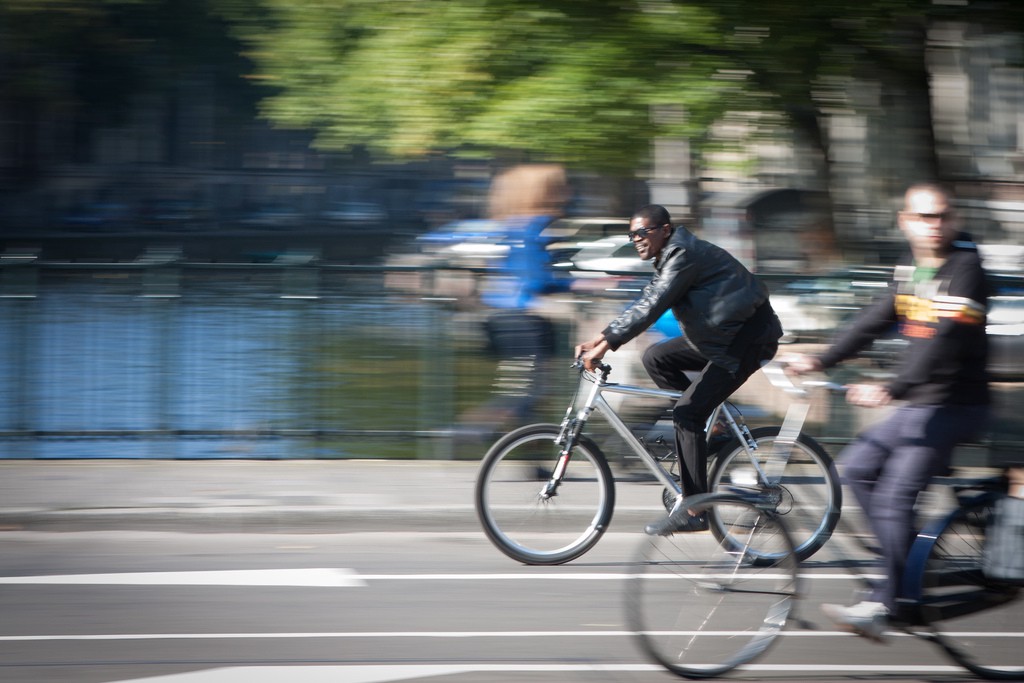

Among the many new gadgets presented at this year’s massive Consumer Electronics Show was a cycle helmet designed to warn drivers and cyclists if they are at risk of collision.
Modern cycling is full of advanced tech–lightweight alloys, carbon fiber, GPS ride trackers, physiological monitors, and so on–and this latest collision-sensing system joins a steady stream of gadgets designed to make cycling safer. (Think smart helmets with a head-up display, integrated turn signals, and mirrors; a sensor that detects if you’ve had a crash and dials for help; and lights that project an image of a bicycle ahead of you on the road.)
It is perhaps surprising then that one of the most promising cycle-safety solutions hasn’t been more widely adopted. It uses composite materials, standardized visual inputs, and networked sensors driving microprocessor-controlled signals to reduce cycling fatalities by almost 70 percent. The best thing about it? It’s been proven to work for over four decades.
This wonder technology? The bike path.
When thinking about technological solutions to the problems of cycle safety, sure, bike lanes have a few drawbacks. Unlike the latest gadget, they’re not a self-contained thing that you can hold (or buy). They’re infrastructure. They only make sense as a system, with their substantial costs and benefits shared over a national population. Each individual section of tarmac may not be that impressive, but as a whole, like water and electricity grids, they form part of the underlying skeleton of society.
The history of Dutch cycling shows that there are genuine choices to be made about biking infrastructure, and the power that these choices can have.
Some might argue that the Netherlands was made for cyclists–take the distinct lack of hills, for example–but the truth it was built that way, too. Indeed, until the 1970s the country followed much the same trajectory as the rest of Western Europe in terms of road design. Car ownership rose sharply in the 1950s, and people turned away from the bikes that had been popular pre-World War II. Urban and traffic planning followed suit.
By the early 1970s, Dutch streets looked much like the car-centered roads in the United States or other parts of Europe. Activists changed this. The rapid rise in automobile numbers led to a huge increase in the numbers of road deaths, with some of the worst accident rates in Northern Europe: In 1971 there were over 3,000 deaths, including 450 children.
Shocked by these numbers, a group of parents, planners, and activists formed the campaigning organization “Stop de Kindermoord,” or “Stop the Child Murders.” Their intervention came at an opportune time. With the oil price shocks of the early 1970s, the Dutch government was receptive to ideas for reducing urban dependence on cars.
The crucial design decision was the provision of high-quality cycling and walking lanes. Separated, but equal. Cyclists were not squeezed into a narrow lane screened only by a line of paint or crammed into a “mixed-use” pavement to the mutual annoyance of pedestrians and cyclists.
Similar to changes in safety philosophies for aviation and medicine, the design accepts that a certain level of human error is inevitable but seeks to mitigate the consequences. For example, careful junction design means that a driver failing to check his wing mirrors can’t turn into a cyclist on the inside; separated bike lanes mean that misjudged overtakes can’t happen.
The Dutch program was a huge success. From the mid-1970s, the total number of cycle tracks in the Netherlands tripled, as per capita cycle mileage increased by 30 percent and cycle death rates improved by 67 percent.
In an ever-urbanizing world looking to tackle fossil fuel usage and obesity, the Dutch example–changing the built environment, not piling more and more tech onto the individual–provides a powerful example.


How We Get To Next was a magazine that explored the future of science, technology, and culture from 2014 to 2019. This article is part of our Going Places section, which looks at the impact of transportation technology on the modern world. Click the logo to read more.
